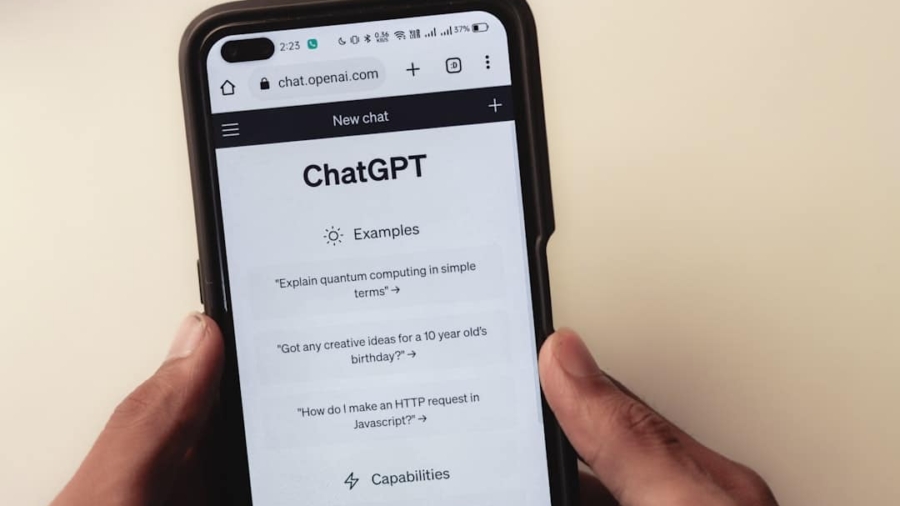The journey of real-time translation technology has been marked by significant milestones that reflect the rapid advancements in both linguistics and computer science. The concept of translating languages instantaneously can be traced back to the early days of machine translation in the 1950s, when researchers began experimenting with algorithms to convert text from one language to another. Early systems were rudimentary, often producing translations that were more literal than meaningful.
For instance, the Georgetown-IBM experiment in 1954 showcased the potential of machine translation but was limited by the technology of the time, resulting in translations that lacked fluency and contextual understanding. As technology progressed, so did the sophistication of translation systems. The introduction of statistical machine translation in the 1990s marked a turning point, allowing for more nuanced translations by analyzing vast amounts of bilingual text data.
This approach enabled systems to learn from context and usage patterns, significantly improving accuracy. The advent of neural machine translation in the 2010s further revolutionized the field. By employing deep learning techniques, these systems could understand and generate human-like translations, capturing idiomatic expressions and cultural nuances that earlier models struggled with.
Companies like Google and Microsoft began integrating these advanced algorithms into their translation services, making real-time translation more accessible to the general public.
Key Takeaways
- Real-time translation technology has evolved significantly, from basic machine translation to advanced AI-powered systems.
- Real-time translation has revolutionized travel and tourism by breaking down language barriers and enhancing the overall travel experience.
- In business and international communication, real-time translation has facilitated seamless communication and collaboration across language barriers.
- Real-time translation technology has played a crucial role in healthcare and emergency situations, enabling effective communication with non-native speakers and saving lives.
- Real-time translation has transformed education and language learning by providing instant access to translated content and facilitating cross-cultural communication.
The Impact of Real-Time Translation on Travel and Tourism
Real-time translation technology has profoundly transformed the travel and tourism industry, enhancing the experiences of travelers and service providers alike. With the ability to communicate seamlessly across language barriers, tourists can navigate foreign environments with greater confidence. For example, mobile applications equipped with real-time translation capabilities allow travelers to converse with locals, read menus, and understand signage without the need for a human interpreter.
This not only enriches the travel experience but also fosters cultural exchange and understanding. Moreover, businesses within the tourism sector have leveraged real-time translation to improve customer service and operational efficiency. Hotels, restaurants, and tour operators can now cater to a diverse clientele by offering multilingual support through chatbots and voice assistants.
For instance, a hotel receptionist can use a real-time translation app to assist a guest who speaks a different language, ensuring that their needs are met promptly and accurately. This capability not only enhances customer satisfaction but also opens up new markets for businesses, allowing them to attract international visitors who may have previously felt deterred by language barriers.
Real-Time Translation in Business and International Communication

In the realm of business and international communication, real-time translation technology has become an indispensable tool for fostering collaboration across borders. As companies expand their operations globally, effective communication with partners, clients, and employees from diverse linguistic backgrounds is crucial. Real-time translation tools facilitate this process by enabling instant communication through text or voice, thereby streamlining negotiations and discussions.
For example, during international conferences or meetings, participants can use translation devices or applications to engage in discussions without the hindrance of language differences. Furthermore, real-time translation has transformed marketing strategies for businesses looking to penetrate foreign markets. Companies can now tailor their messaging to resonate with local audiences by utilizing translation tools that adapt content to cultural contexts.
This capability allows businesses to create targeted advertising campaigns that speak directly to consumers in their native languages, enhancing engagement and brand loyalty. A notable example is how global brands like Coca-Cola and McDonald’s have successfully localized their marketing efforts through real-time translation, ensuring that their messages are culturally relevant and linguistically accurate.
Real-Time Translation in Healthcare and Emergency Situations
The application of real-time translation technology in healthcare settings has proven to be a game-changer, particularly in emergency situations where clear communication is vital. Language barriers can pose significant risks in medical contexts, potentially leading to misdiagnoses or inadequate treatment. Real-time translation tools enable healthcare professionals to communicate effectively with patients who speak different languages, ensuring that critical information is conveyed accurately.
For instance, hospitals equipped with translation devices can provide immediate assistance to non-English speaking patients during emergencies, allowing medical staff to gather essential information about symptoms and medical history without delay. In addition to emergency care, real-time translation plays a crucial role in routine healthcare interactions. Telemedicine has gained traction in recent years, allowing patients to consult with healthcare providers remotely.
By incorporating real-time translation technology into telehealth platforms, providers can offer services to a broader range of patients, regardless of their language proficiency. This inclusivity not only improves access to healthcare but also enhances patient outcomes by ensuring that individuals receive appropriate care tailored to their linguistic needs.
The Role of Real-Time Translation in Education and Language Learning
Real-time translation technology has also made significant strides in the field of education and language learning. In classrooms around the world, educators are increasingly utilizing translation tools to create inclusive learning environments for students from diverse linguistic backgrounds. For instance, teachers can employ real-time translation applications during lessons to ensure that all students understand the material being presented, regardless of their primary language.
This approach fosters engagement and participation among students who might otherwise struggle to keep up with their peers. Moreover, real-time translation technology has revolutionized language learning itself. Language learners can now practice speaking with native speakers through platforms that offer instant translation capabilities.
This immersive experience allows learners to engage in conversations without the fear of making mistakes or being misunderstood. Additionally, educational institutions are beginning to incorporate real-time translation tools into their curricula, enabling students to explore foreign languages more effectively. By providing immediate feedback on pronunciation and grammar, these tools enhance the learning process and encourage students to develop their language skills with confidence.
The Future of Real-Time Translation Technology

Looking ahead, the future of real-time translation technology appears promising as advancements continue to emerge at a rapid pace. One area poised for growth is the integration of artificial intelligence (AI) and machine learning into translation systems. As these technologies evolve, we can expect even greater accuracy and contextual understanding in translations.
For instance, AI-driven systems may be able to recognize regional dialects and cultural nuances more effectively than current models, leading to translations that resonate more deeply with users. Additionally, the proliferation of wearable technology may further enhance real-time translation capabilities. Devices such as smart glasses or earbuds could provide users with seamless translations in their field of vision or through audio prompts as they interact with others.
This would allow for a more natural conversational flow without the need for smartphones or other devices that can interrupt communication. As these innovations unfold, we may witness a future where language barriers become increasingly irrelevant in our interconnected world.
Challenges and Limitations of Real-Time Translation
Despite its many advantages, real-time translation technology is not without its challenges and limitations. One significant hurdle is the issue of accuracy; while advancements have improved translations considerably, nuances in language can still lead to misunderstandings or misinterpretations. For example, idiomatic expressions or culturally specific references may not translate well across languages, resulting in confusion or unintended offense.
This limitation underscores the importance of human oversight in critical communication scenarios where precision is paramount. Another challenge lies in the technological infrastructure required for effective real-time translation. In many parts of the world, access to high-speed internet or advanced devices may be limited, hindering the widespread adoption of these tools.
Additionally, privacy concerns arise when using real-time translation applications that require access to personal data or conversations. Users may be hesitant to rely on such technologies if they feel their information is at risk of being compromised or misused.
The Ethical Implications of Real-Time Translation Technology
The rise of real-time translation technology also brings forth ethical considerations that warrant careful examination. One major concern revolves around data privacy and security; as users engage with translation applications that collect personal information or conversation data, questions arise about how this data is stored and utilized by companies. Ensuring robust data protection measures is essential to maintain user trust and safeguard sensitive information from potential breaches.
Furthermore, there are ethical implications related to dependency on technology for communication. As individuals increasingly rely on real-time translation tools, there is a risk that language skills may deteriorate over time. This raises questions about cultural preservation and linguistic diversity; if people become less inclined to learn new languages due to reliance on technology, unique languages and dialects may face extinction.
Balancing the benefits of real-time translation with the need for linguistic competence is crucial for fostering a world where diverse languages continue to thrive alongside technological advancements. In conclusion, while real-time translation technology offers remarkable opportunities for enhancing communication across various domains—from travel and business to healthcare and education—it also presents challenges that must be addressed thoughtfully. As we navigate this evolving landscape, it is essential to consider both the potential benefits and ethical implications associated with these advancements in order to create a future where language barriers are diminished while preserving cultural richness and diversity.
In the rapidly evolving landscape of technology, real-time translation tools are playing a pivotal role in bridging communication gaps across the globe. These advancements are part of a broader trend where technology is increasingly integrated into our daily lives, enhancing both personal and professional interactions. A related article that delves into another aspect of technological innovation is com/how-smartwatches-are-revolutionizing-the-workplace/’>How Smartwatches Are Revolutionizing the Workplace.
This piece explores how wearable technology is transforming work environments, much like how real-time translation is transforming global communication, by improving efficiency and connectivity. Both articles highlight the profound impact of technology in breaking traditional barriers and fostering a more interconnected world.
FAQs
What is real-time translation technology?
Real-time translation technology is a type of software or hardware that can instantly translate spoken or written language from one language to another.
How does real-time translation technology work?
Real-time translation technology works by using advanced algorithms and machine learning to analyze and interpret the input language, and then generate an accurate translation in the desired output language.
What are the benefits of real-time translation technology?
Real-time translation technology can break down language barriers, facilitate communication between people who speak different languages, and enable businesses to reach a global audience. It can also improve accessibility for individuals with limited language proficiency.
What are some popular real-time translation tools?
Popular real-time translation tools include Google Translate, Microsoft Translator, and Skype Translator. These tools are available as mobile apps, web-based platforms, and integrated into various communication devices.
How is real-time translation technology impacting global communication?
Real-time translation technology is revolutionizing global communication by enabling seamless and instant translation between languages, fostering cross-cultural collaboration, and promoting inclusivity in diverse settings such as business, education, and travel.

